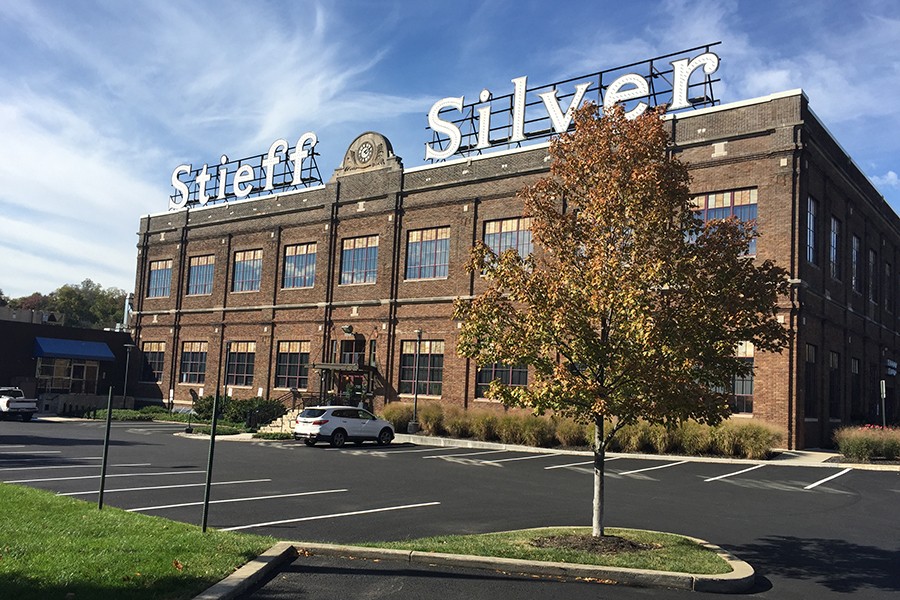The Johns Hopkins University today bought Baltimore's historic Stieff Silver complex, making a highly visible symbol of the city's manufacturing heritage formally a part of its future in the knowledge economy.
The two-building, 1.2-acre former silver factory complex, where the university has leased space since 2002, will continue to house Whiting School of Engineering tenants. It will also offer swing space, providing a temporary home for Whiting School offices and departments while their permanent quarters at the university's nearby Homewood campus undergo renovations.
"The Whiting School is proud that a site so important to Baltimore's history is now a part of our own," said Ed Schlesinger, dean of the school. "Engineers like our faculty and students are in a unique position to appreciate both the craftsmanship and the artistry of those who produced much-admired silverware at Stieff for so many decades. I like to think that those Stieff craftsmen would admire and appreciate the advances that will come out of our work in their former buildings."
The university bought the complex, at the south end of Hampden between Homewood and the Jones Falls, from KS Wyman Park Development Company LLC, its owner since 2007.
Commuters on the northbound Jones Falls Expressway know the complex for the large, highly visible, and brightly lit "Stieff Silver" sign atop the site's two-story original building, built in two stages in 1925 and 1929. On the National Register of Historic Places since 2000, the 35,000-square-foot "old" building now houses some nonuniversity tenants.
Whiting School labs and research facilities currently occupy much of the 49,000-square-foot 1971 "new" building. As the owner rather than the tenant, the school can continue to invest in the facilities without concern about someday being displaced.
Though planning for new uses continues, in the short term, the school intends to move more research to the Stieff Silver site and expand the facilities already there. It also plans to transfer to Stieff two academic support groups from the school's Engineering for Professionals program.
Also see
The Stieff complex is a visible reminder of Baltimore's once nationally important silversmith industry, dating back as far as 1815 and including several prominent companies, according to the site's National Register designation. Founded in 1904 when Charles C. Stieff bought out his partner in a predecessor firm, Stieff Silver started in downtown before moving out to the site just above Falls Road about two decades later.
During World War II, when silver was rationed, the company switched most of its attention to alternatives like electronics, radar parts, and surgical instruments, according to the National Register document. After the war, the Hampden site returned to producing silver services and other consumer goods—increasingly including pewter reproductions and gifts—until it closed in 1999. Stieff was well-known for crafting the silver trophies given each year to winners of the Preakness Stakes, smaller replicas of the race's priceless permanent trophy, the Tiffany and Co.-made Woodlawn Vase.
Still priceless to many Baltimoreans is an annual December tradition: Yes, the light bulbs of the Stieff Silver sign will continue to shine red and green for the holidays.
"Absolutely," Schlesinger said.
Posted in University News
Tagged real estate









